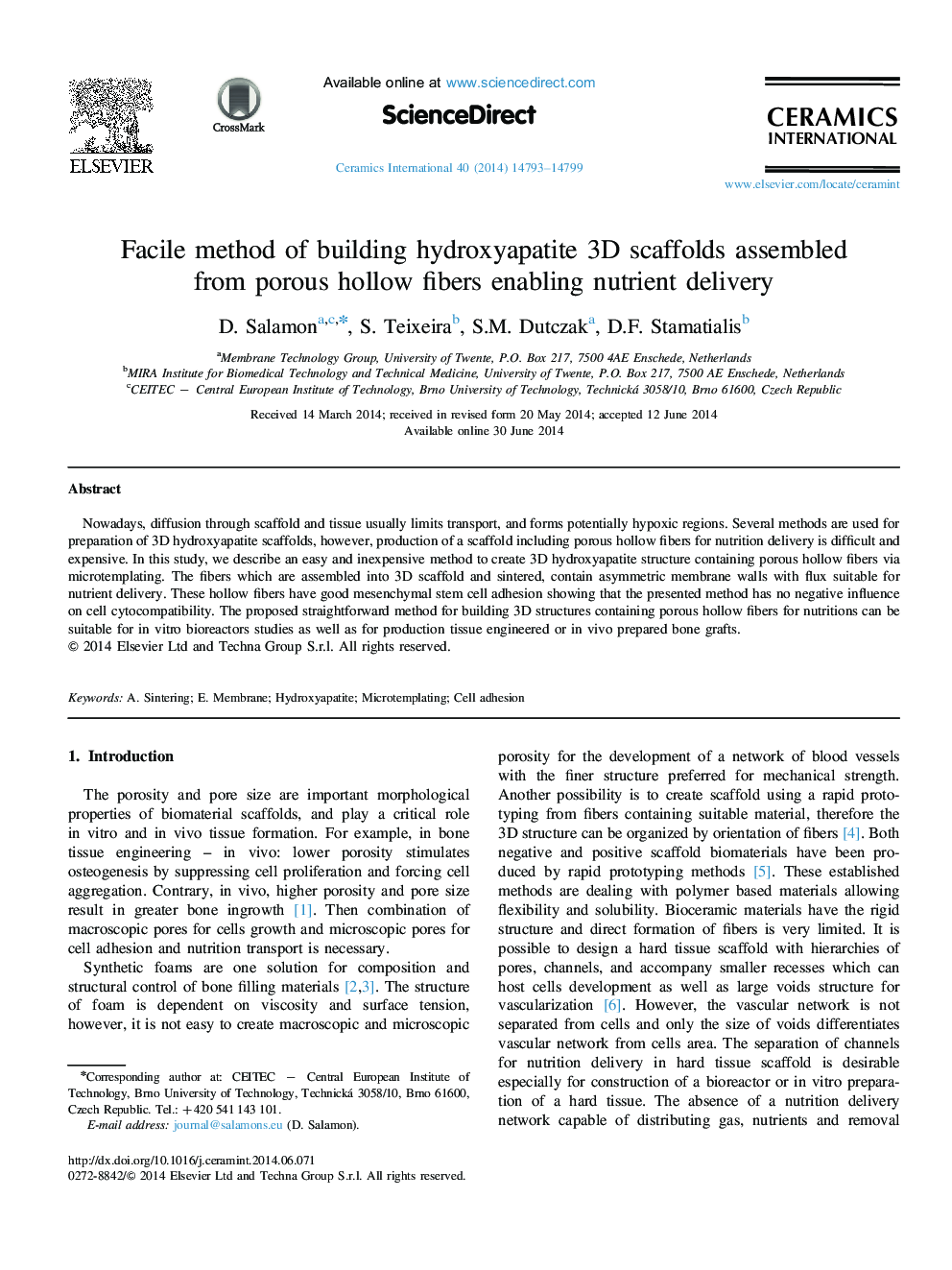| Article ID | Journal | Published Year | Pages | File Type |
|---|---|---|---|---|
| 1461221 | Ceramics International | 2014 | 7 Pages |
Nowadays, diffusion through scaffold and tissue usually limits transport, and forms potentially hypoxic regions. Several methods are used for preparation of 3D hydroxyapatite scaffolds, however, production of a scaffold including porous hollow fibers for nutrition delivery is difficult and expensive. In this study, we describe an easy and inexpensive method to create 3D hydroxyapatite structure containing porous hollow fibers via microtemplating. The fibers which are assembled into 3D scaffold and sintered, contain asymmetric membrane walls with flux suitable for nutrient delivery. These hollow fibers have good mesenchymal stem cell adhesion showing that the presented method has no negative influence on cell cytocompatibility. The proposed straightforward method for building 3D structures containing porous hollow fibers for nutritions can be suitable for in vitro bioreactors studies as well as for production tissue engineered or in vivo prepared bone grafts.
